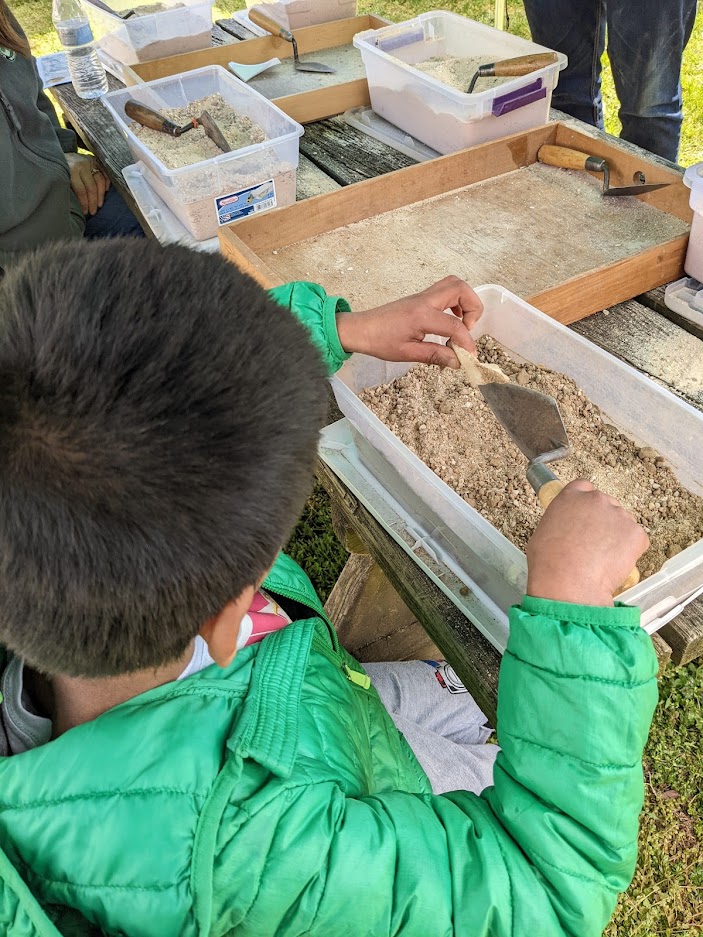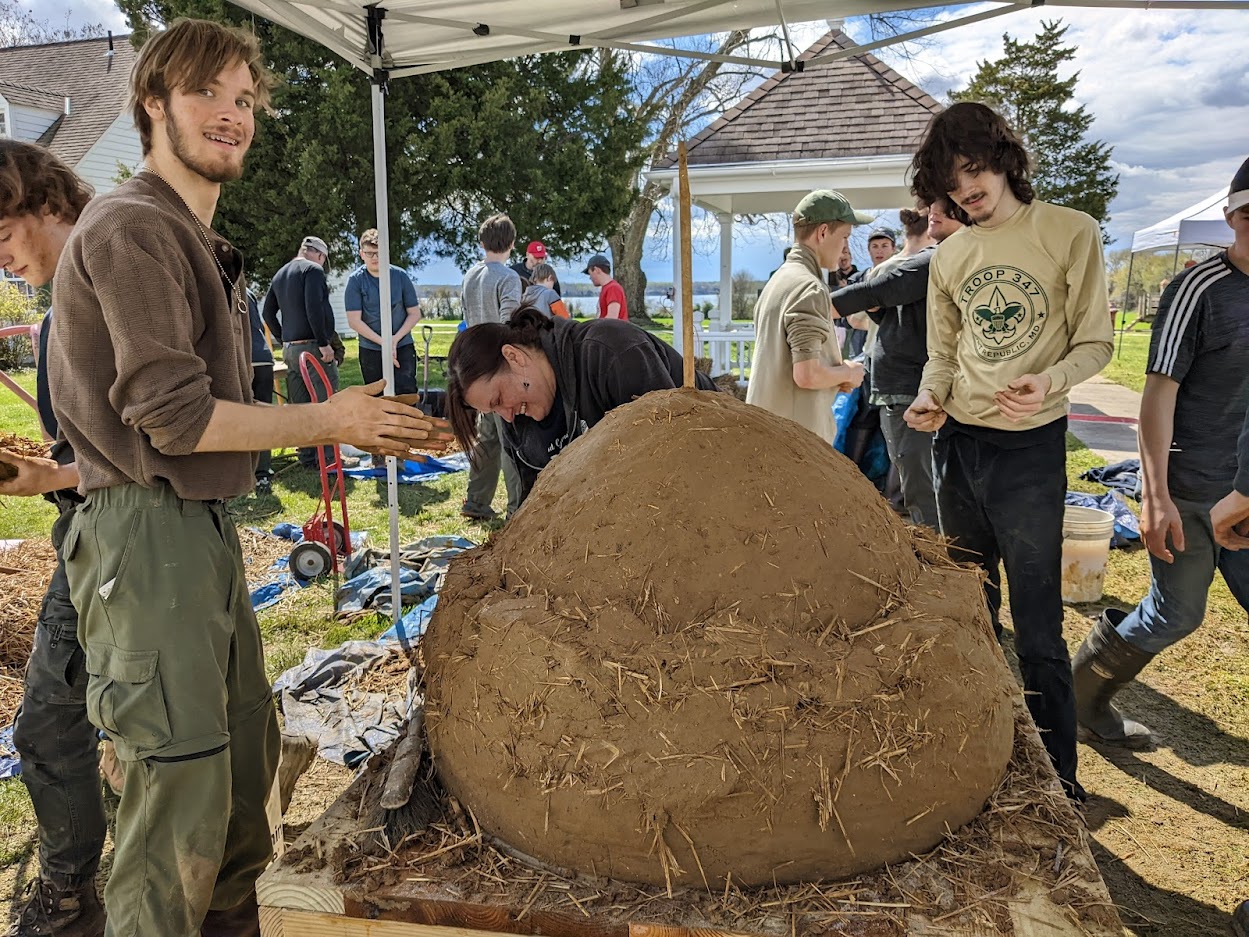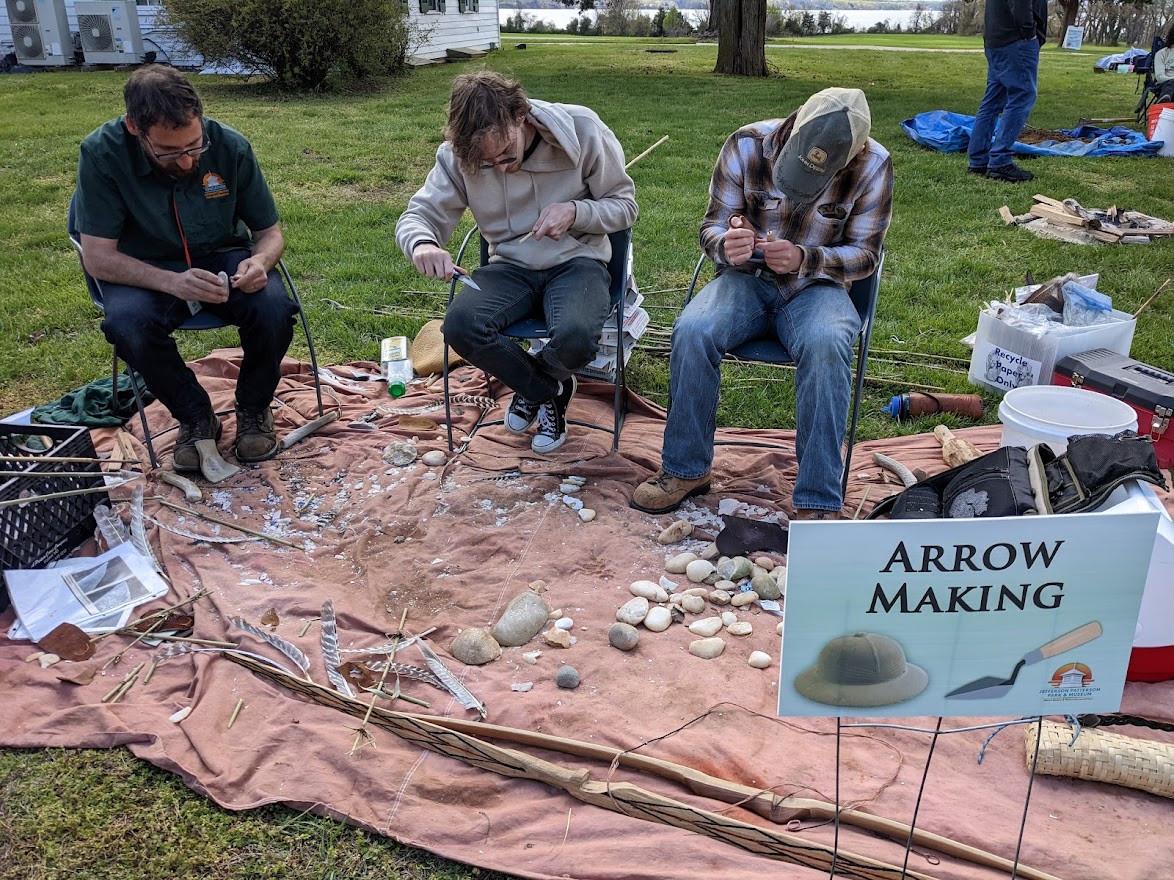Dig Into Public Archaeology at Jefferson Patterson Park




By Molly Weeks Crumbley
Ready to dig into the past? If you live in Calvert County, April just might be your month. Following the example of Gov. Hogan, who issued a proclamation in support of Maryland Archaeology Month on April 1, Calvert County’s Board of County Commissioners also came out in support of the field. “Understanding people of the past and their way of life educates our decisions for the future. Calvert County has a rich, diverse heritage spanning 12,000 years of human habitation,” the board stated in a release.
Some of the best representations of that heritage can be found at Jefferson Patterson Park, a sprawling public park in St. Leonard. The property houses the Maryland Archaeological Conservatory Laboratory (MAC Lab), which celebrated Archaeology Month with their annual Discovering Archaeology Day April 9. Guests were treated to exhibits and activities from educators and archaeologists all over Maryland and Virginia, with plenty of enticing hands-on opportunities for children to engage in. Visitors took tractor rides to the King’s Reach excavation site, went trawling for artifacts, cheered on participants in an arrow making contest, and marked off bingo cards in the hopes of winning prizes.
Much of the focus of the celebration was on technological advances in the field of archaeology. Though archaeology still involves plenty of digging, new technologies like radar, 3D scanning, X-rays, and microscopic imaging have been able to shed new light on artifacts.
Many artifacts were on display for attendees to look at up close—some on a microscopic level. Inside the MAC Lab, deputy director Scott Strickland enthusiastically ushered visitors inside lab to show off some of the collections stored there. “Would you like to see some of the toys that kids used to play with long ago?” he asked a small child.
“Have you ever heard of something called a witch bottle?” he asked another visitor. They hadn’t. “Oh, you have to see the ones we have here!” (For the record, a witch bottle was a urine and nail filled vessel placed outside of a home in the hopes of warding off witchcraft and other evil spirits.)
In addition to showing off the science, educators were set up all over the grounds to give demonstrations of what some of those artifacts might have looked like when they were actually in use. In the center of the festivities, Boy Scout Troop 347 was on hand to demonstrate ancient cooking techniques by building their own wood-fired cob oven (or, as one scout merrily shouted, “we got to play in the dirt for hours!”). Throughout their muddy work, they enlisted volunteers to haul sand, stomp mud and straw into clay, and shape their creation.
At another tent nearby, museum educator Kenneth Horowitz taught participants how Native Americans would have used deer antlers to carve soapstone bowls 4,000 years ago. “This is hard work!” a young chiseler exclaimed as she hammered her antler into the hefty stone before her. “It makes you appreciate just how much work a bowl of soup would have taken!” agreed Horowitz.
At still other tents, participants could be seen playing with colonial-era toys and games, hammering designs into tin lantern plates, etching designs into clay with shark teeth, and constructing wigwams with pipe cleaners.
If you missed the event, Jefferson Patterson Park has many more opportunities coming up for archaeological exploration. From 9 am to 3pm on Thursdays, Fridays, and Saturdays in May, the museum hosts public programs, where you can help dig and screen for artifacts in the field or wash objects at the MAC Lab. And you can attend as often as you want—an hour, a day, even the entire month.
All public archaeology days are free, but space is limited and registration is required. Children under the age of 15 must have an adult with them. Register: [email protected] or 410-586-8554.
Want to learn about archaeology but with less dirt involved? The museum offers free weekly tours of the MAC Lab on Thursdays from 1-2:30 pm. Pre-registration is advised but not required for these tours.
For more information about Jefferson Patterson Park, visit them online at jefpat.maryland.gov or on Facebook @JPPMMD.
